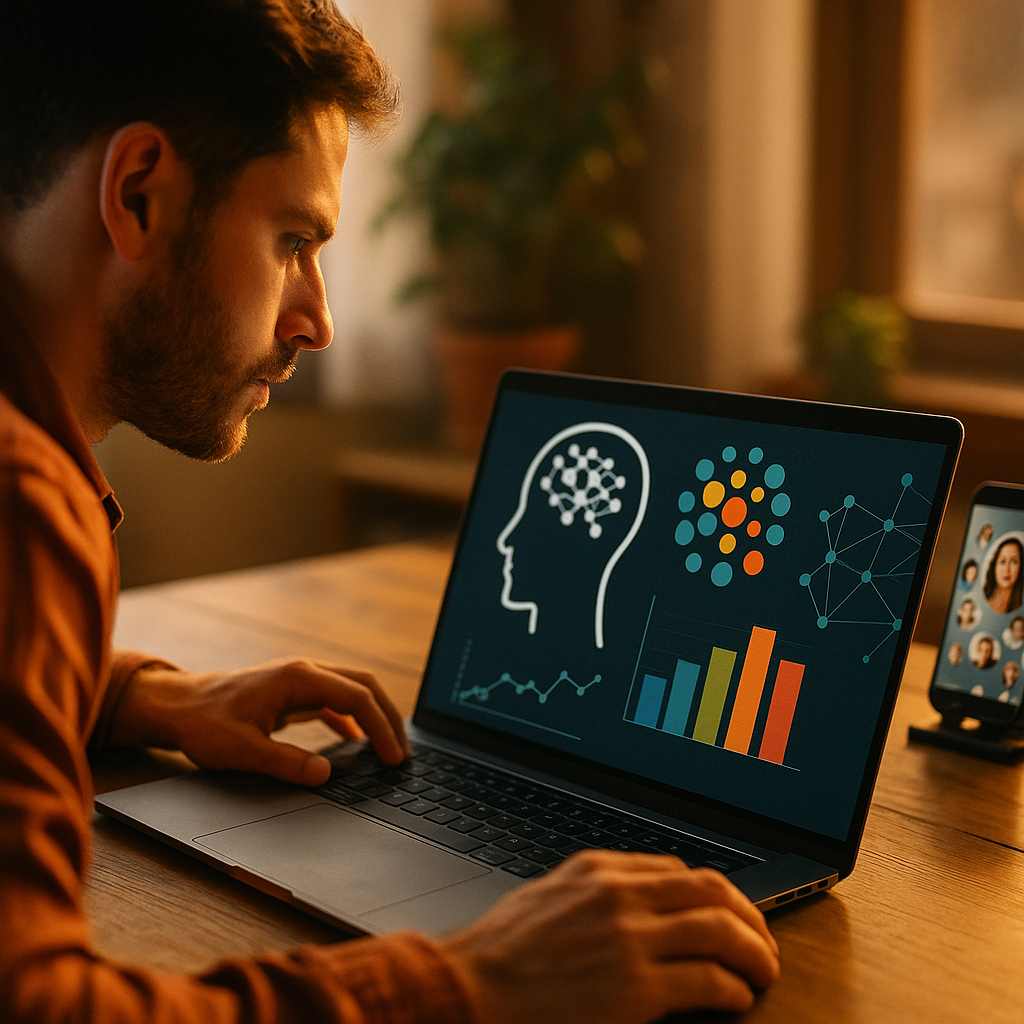Leveraging artificial intelligence to cluster your audience into segments for targeted influencer campaigns has become a game changer in digital marketing. By combining intelligent data analysis with influencer strategies, brands can maximize ROI and authenticity. Are you ready to discover how AI makes audience segmentation smarter—and how you can benefit from it?
How AI-Driven Audience Segmentation is Transforming Influencer Campaigns
AI-driven audience segmentation employs machine learning algorithms to analyze vast streams of behavioral, demographic, and psychographic data. Rather than relying on assumptions or broad categories, AI reveals subtle patterns and nuanced clusters within your audience. This data-driven approach enables brands to tailor influencer campaigns to micro-segments, ensuring each message resonates with the right people at the right time.
In 2025, platforms like Google Analytics 4, Facebook’s AI tools, and emerging SaaS solutions offer brands detailed segmentation built on neural networks and real-time engagement data. These tools automatically cluster users based on their purchasing history, content engagement, and even sentiment expressed in comments and reviews. As a result, marketers can assign ideal influencer matches to hyper-specific audience segments, dramatically improving campaign efficiency.
Benefits of Clustering Your Audience Using Artificial Intelligence
Clustering your audience with artificial intelligence delivers measurable advantages:
- Precision targeting: AI identifies relevant segments beyond traditional demographics, including shared interests, behaviors, and engagement patterns.
- Scalability: Machine learning can process and segment millions of profiles swiftly, outpacing manual efforts and reducing human error.
- Personalization: Campaigns become more relevant because each influencer message addresses the unique preferences of its segment.
- Improved ROI: According to a 2025 HubSpot report, segmented influencer campaigns powered by AI see an average 41% higher conversion rate compared to traditional segmentation.
- Feedback loops: AI continually refines clusters based on real-time performance data, adapting strategies on the fly for optimal impact.
Such benefits empower brands to deliver what their audiences genuinely care about, fostering stronger loyalty and measurable growth.
Implementing AI Clustering for Detailed Influencer Audience Insights
Implementation starts by collecting holistic data from your owned channels, CRM systems, and social platforms. Advanced AI tools integrate this data, scanning for behavioral cues and purchase motivations. Common clustering techniques include k-means, hierarchical clustering, and deep learning models—all working to discover meaningful audience segments.
Once clusters are identified, each audience segment is profiled in detail. For example, a beauty brand may discover a cluster of eco-conscious Gen Z women who prefer cruelty-free products, and another of working professionals seeking time-saving routines. With this insight, the brand can pinpoint exactly which influencers best match each segment’s values and preferences, ensuring more impactful collaborations.
Marketers should also leverage A/B testing and campaign optimization features within AI tools to validate clusters and maximize campaign performance across all segments.
Choosing Influencers for Each AI-Generated Cluster
AI clustering transforms the way marketers approach influencer identification. With granular audience segments in hand, brands should select influencers who deeply resonate with each cluster’s values, tastes, and preferred communication channels.
- Relevance matters: Select influencers already engaging with the profile of your target cluster. AI tools like CreatorIQ and Tagger analyze influencer–audience overlaps for best-fit recommendations.
- Authenticity is vital: Micro and nano influencers often outperform celebrities when campaigns target niche clusters. Their content feels more trustworthy and relatable, driving higher engagement.
- Performance-based selection: Use AI-powered analytics to review influencer campaign histories. Platforms can now project likely outcomes—click-through, conversion, and brand lift—based on tracked performance with similar segments.
This data-backed influencer selection method ensures your campaigns deliver tailored content—turning segmented clusters into high-value brand advocates.
Measuring the Impact: KPIs and Real-Time Optimization Using AI
After launching targeted influencer campaigns, AI continues to play a key role—this time in tracking performance and optimizing ROI. Key performance indicators (KPIs) such as engagement rate, conversion rate, sentiment analysis, and customer lifetime value enable precise measurement per cluster segment.
Modern AI-powered dashboards offer live campaign performance heatmaps, flagging both winning segments and underperforming clusters. If engagement among a specific segment dips, AI and automation can redirect budget or swap influencers mid-campaign—adaptively increasing results without waiting for post-mortem reporting.
Furthermore, AI models learn from ongoing data, automatically fine-tuning audience clusters and influencer matches for future campaigns. This dynamic loop ensures every new influencer strategy is sharper and more personalized than before.
Ethical Considerations in AI Audience Segmentation for Influencer Marketing
Brands should uphold trust and transparency as they implement AI for influencer campaign targeting. Ethical data use, explicit customer consent, and compliance with data privacy laws are crucial—especially as AI processes increasingly sensitive personal information.
In 2025, leading companies also use AI fairness tools that monitor for bias and ensure diverse, inclusive clusters. Responsible application of AI safeguards both the brand’s reputation and the audience’s trust, laying a sustainable foundation for ongoing digital success.
FAQs: AI Audience Clustering for Influencer Campaigns
-
What is audience clustering with AI?
AI audience clustering automatically groups users into meaningful segments using behavioral and demographic data, unlocking more precise influencer targeting than manual methods. -
Which types of data are used for AI audience clusters?
AI analyzes data such as online activity, purchasing intent, content interactions, social media behaviors, and even sentiment from messages or reviews. -
Can small brands implement AI audience segmentation?
Absolutely. Numerous SaaS tools and platforms offer scalable, user-friendly audience clustering solutions accessible to businesses of all sizes—not just enterprise brands. -
How does AI clustering improve influencer campaign ROI?
By ensuring every influencer partnership addresses a hyper-relevant audience segment, AI-driven campaigns achieve higher engagement, conversion, and lifetime value per customer. -
Is AI audience clustering compliant with data privacy laws?
Yes, when brands follow best practices—such as secure data storage, obtaining informed consent, and choosing ethical AI vendors—they can safely leverage audience clustering within privacy law boundaries.
In summary, using AI to cluster your audience into segments for targeted influencer campaigns revolutionizes digital marketing. By embracing this data-driven approach, brands drive authentic engagement, maximize ROI, and foster lasting loyalty—transforming influencer partnerships in the evolving 2025 landscape.
